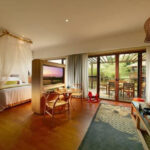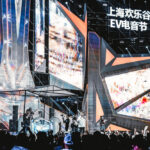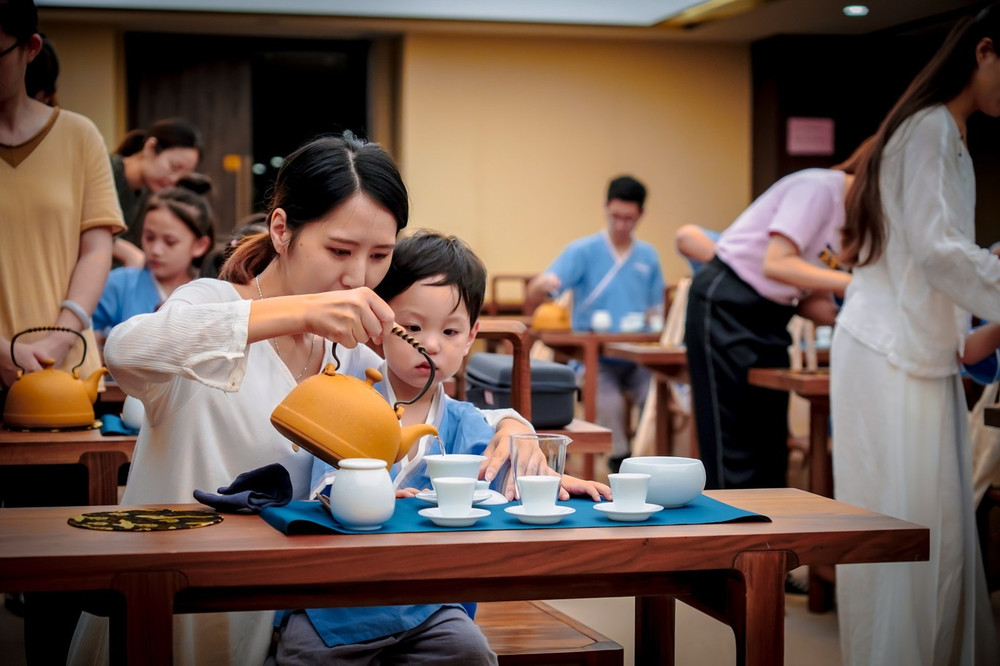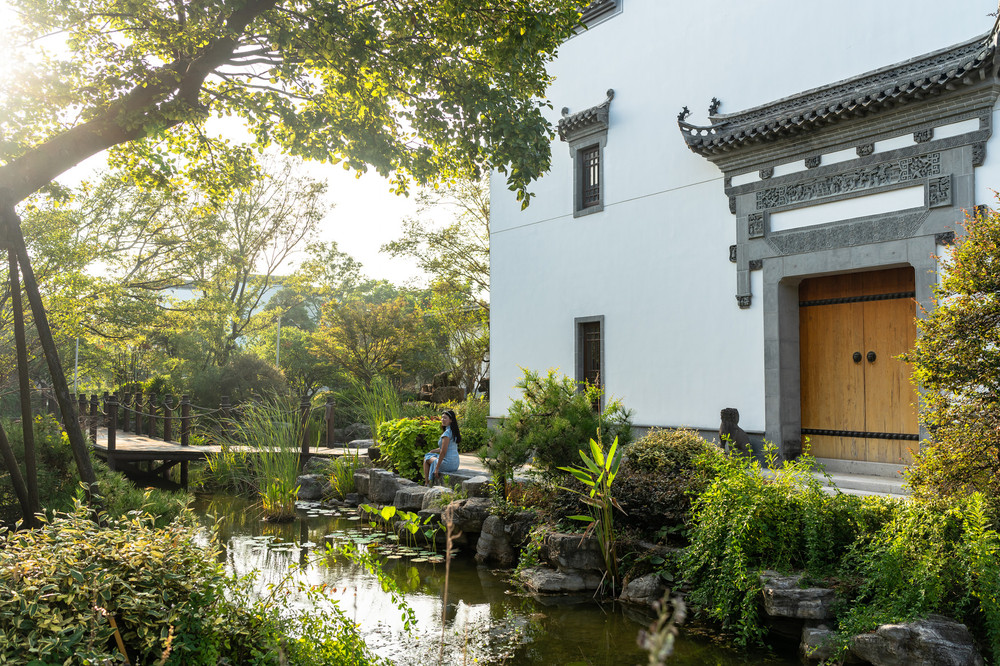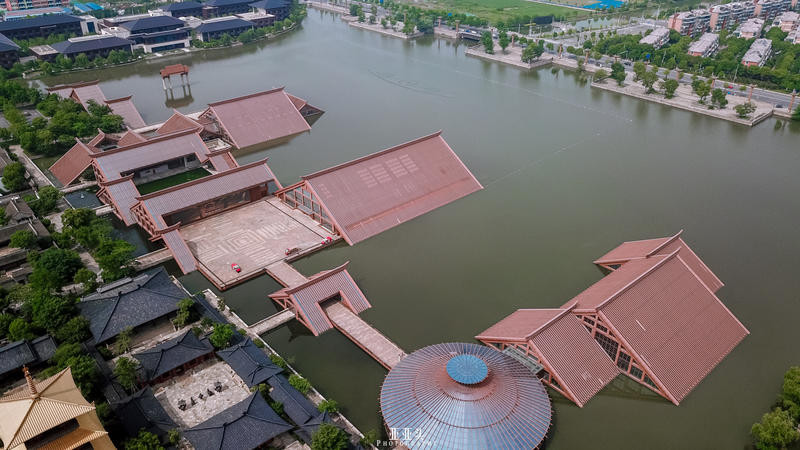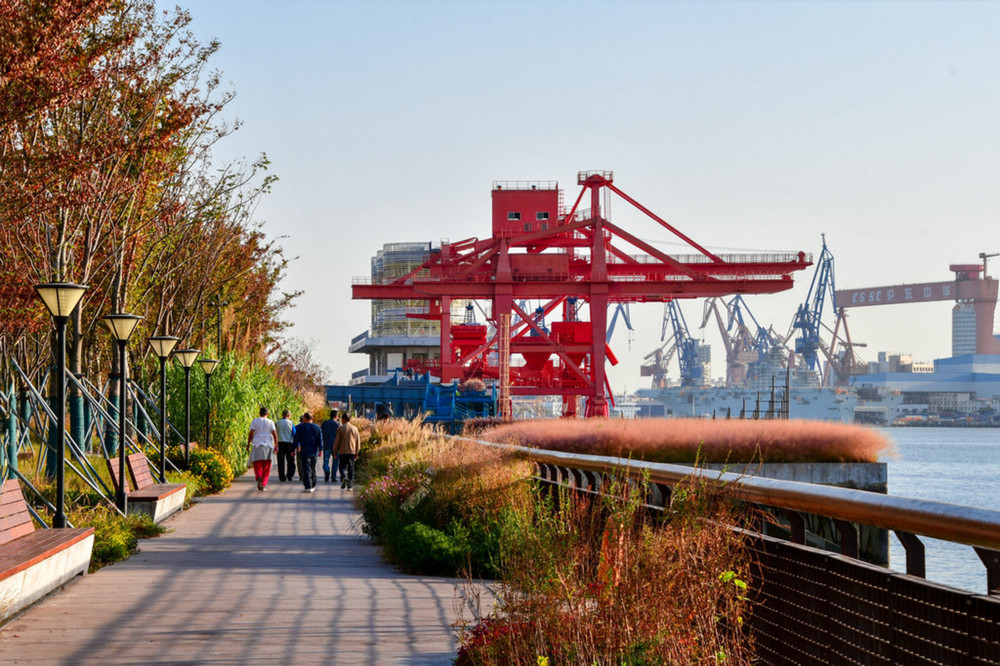Published on 2021-05-20 at 15:38.
Duration: 3 days. Time: March 20, 2021, to March 22, 2021.
Characters: A family of three.
With whom: Family.
Mode of transportation: Baojun 310W travel car.
Travel arrangements:
Day 1: Shanghai to Jing County, staying overnight at Hanting Hotel (Jing County branch).
Day 2: Jing County to the full route of the Southern Anhui Sichuan-Tibet Line to Guangde, staying overnight at Home Inn (Guangde branch).
Day 3: Guangde to Shanghai.
This was truly a spontaneous trip. On the 19th, I discussed with my husband that we had three days available; why not go somewhere? After he agreed, we immediately prepared our travel gear and set off early on the morning of the 20th for an early spring tour in Southern Anhui. The starting point of our journey was Jing County, Xuancheng, Anhui.
The author visited these places: Shanghai Hanting Hotel, Xuan Paper Cultural Park, Hanting Hotel, Jingting Mountain, China Crocodile Lake, Home Inn.
Like most people, I originally thought that the Xuan paper, one of the four treasures of the study, was produced in Xuancheng. However, the true production site of Xuan paper is Jing County. It was a great fortune to visit the ancient method of making Xuan paper that has been passed down for over a thousand years, to understand the craftsmanship of paper, ink, brushes, inkstones, fans, paper screens, and to personally experience the making of these items. This trip was also educational and entertaining, allowing the children to appreciate the charm of traditional culture.
The ticket price for the Xuan Paper Cultural Park is 50 yuan, and when I visited in March, it was half price for ladies. Children: free for those under 1.2 meters (not including); half price for those 1.2 meters (including) to 1.4 meters (not including). Elderly: free for those 65 years old (including) and above; half price for those 60 years old (including) to 65 years old (not including). Military personnel: free with an officer’s ID. Disabled: free with a disability certificate.
The Xuan Paper Cultural Park is composed of seven parts: the ancient Xuan paper workshop, the Four Treasures of the Study experience park, the Xuan paper and world paper exhibition hall, the calligraphy and painting gallery (including the calligrapher and painter’s studio), the Four Treasures of the Study and calligraphy and painting market, and the ancient book printing and Jiangnan folk customs park.
This is the well-preserved old workshop from the past. The factory displays an eight-meter-long Xuan paper Chinese painting, which is truly stunning! Only by coming to the Xuan Paper Museum in Jing County did we truly understand the Xuan paper of our country. Many people like to hang a few of their own calligraphy or famous calligraphers’ and painters’ works in a Chinese-style study to show their temperament. However, most people do not know that the Xuan paper, which is durable, resistant to decay and insects, and has a thousand changes in ink, is not easy to make.
[Material selection] As a unique branch in papermaking, Xuan paper production actually includes two types of materials, one is the bark of the Phoebe sheareri tree, and the other is the straw of the sandy paddy field. Both need to go through strict processes such as soaking, cleaning, boiling, and drying day after day before they can be used to make Xuan paper.
[Sunbathing] The straw and Phoebe sheareri bark after sunbathing are called ‘Liao grass’ and ‘Liao bark’.
[Selection] After multiple processes, the formed bark and straw still need to be checked by hand to remove the unqualified, stained bark and straw.
[Pounding the bark] The so-called pounding of the bark is the process where the masters place the bark and straw in a stone mortar and use a large wooden hammer for repeated pounding and pressing. This process is lengthy, lasting until the bark and straw are sticky enough to form a rough sheet of bark paper.
[Slice] The bark paper made by pounding will be stacked up and cut meticulously with an old knife. The pieces of bark paper are cut into small squares.
[Tread on materials] The square strips of leather materials need to be transferred to a special small vat and continuously trampled. The raw materials are trampled by people and mixed into a ball. The trampling process is extremely difficult and pays attention to rhythm, speed, and strength, all three being even.
[Bag materials] The materials trampled into aWe set off from Shanghai early in the morning, drove to Jingxian and visited the Rice Paper Culture Park. The road leading to the exhibition hall is paved with black and white pebbles. Black symbolizes ink, and white symbolizes rice paper. The exhibition hall is not large, but it is arranged in an orderly manner and is very clean. The exhibition hall displays the production steps of some rice paper and some old production tools. The second floor is the display of calligraphy and painting works. There are many famous works, which is really a feast for the eyes. (However, photography is not allowed on the second floor). Next to the first floor, there is an experience center where you can pick up a brush and try the charm of calligraphy! Under such repeated cooperation, pieces of rice paper in their initial forms are presented in front of everyone. [Drying paper] The moist rice paper still needs to be dried artificially. Put it in a drying room and brush the paper flatly on the drying wall with a pine brush. After drying, peel it off. In this way, a perfect piece of rice paper is formed. During this trip, we were very fortunate to see Zhou Donghong. This national model worker is very simple and approachable. When we went, he was ‘lifting paper’. He inherits the traditional handicrafts of the Chinese nation and works meticulously. We really admire him. After visiting the entire production process of rice paper, we are really impressed by the diligence and wisdom of the Chinese nation. The short plant behind me is the Pteroceltis tatarinowii tree. After completing the entire visit, I was really shocked. Little Jiajia also learned a lot and was impressed by the diligence and wisdom of the Chinese nation. Those who have children at home are really recommended to come here and feel the profoundness and breadth of Chinese civilization! In 2006, the production technique of rice paper was included in the first batch of national intangible cultural heritages. On September 30, 2009, the traditional production technique of rice paper was affirmed by UNESCO and included in the list of intangible cultural heritages of humanity. I hope this heritage can be completely inherited and carried forward. By this time, night had fallen. The three of us were also hungry and exhausted. We chose the Hanting Hotel in Jingxian. It is 14 kilometers from the Chinese Rice Paper Culture Park to the Hanting Hotel, which takes about 20 minutes. The hotel is located in Red Star Macalline on the east side of Tongxin Road, Jingchuan Town. The three of us chose a family room. The room is very spacious. With a double bed and a single bed, equipped with a sofa, coffee table, and small desk, it is still relatively comfortable. The key is that the price is cheap, only 164 yuan! The next morning, after we washed up and had breakfast, we set off for the ‘Wannan Sichuan-Tibet Line’. The Wannan Sichuan-Tibet Line has been very famous in recent years. I have been longing for it for a long time. This time, I finally got my wish. It is 324 kilometers from Shanghai to the Wannan Sichuan-Tibet Line, and it basically takes about five hours. The enigmatic Southern Anhui ‘Sichuan-Tibet’ route begins in Qinglong Township of Ningguo City in the east, extends to Qinxi Township of Jing County in the west, reaches Caijiabu Town in the south, and stretches to the urban area of Xuancheng in the north. The most exquisite section of this route spans approximately 120 kilometers. It traverses the Jiangnan Poem Mountain, favored by the poet Li Bai; the Chinese Alligator Lake, listed in the World Natural Heritage Tentative List; and the last untouched ‘paradise on earth’ in Southern Anhui – the Ink Wash Tingxi. The route also includes the twisting and turning Taoling Seven-Star Mountain Road, with its precipitous cliffs and continuous 180-degree hairpin turns. Along the way, one can find the beauty of Guilin’s landscapes, the peculiarity of Yunnan’s stone forests, and the ruggedness of the Sichuan-Tibet route, all uniquely condensed into the essence of Southern Anhui’s landscapes, full of twists, thrills, and enchanting scenery. The continuous green mountains and bamboo seas, clear blue waters and lakes, and the distant ancient towns and villages make it an ideal choice for both cycling and self-driving. We chose the route from Jing County: Jing County – Langqiao Town of Jing County – Caijiabu Town of Jing County – Tingxi Township of Jing County (passing through the Seven-Star hairpin turns of Anhui’s Sichuan-Tibet route) – Fangtang Township of Ningguo – Guangde. The journey was filled with lush green mountains and clear waters, with roads thatWe had heard of the beauty of Southern Anhui’s rapeseed flowers, and indeed, they were stunning! We saw vast fields of them along the way and couldn’t resist stopping to admire and smell the flowers, feeling the essence of spring.
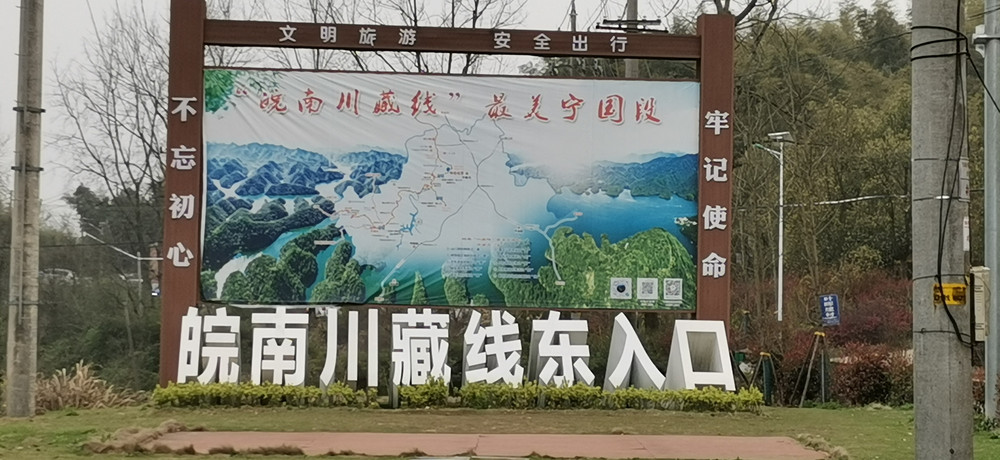
Although we had planned to visit Moon Bay and Ink Wash Tingxi, the scenic views along the way were so captivating that we stopped and explored whenever we found an attractive spot. This leisurely way of traveling was truly enjoyable.
For us city dwellers, it was liberating to pose freely without the crowds of tourist spots. The peacefulness of these mountain villages was delightful, with only the sounds of insects, birds, and the gentle flow of streams. The air was so fresh, filled with a faint floral scent. This was spring at its finest!
Everywhere we looked, clear streams flowed, and it was a pity that the weather was too cold for us to enjoy them. If it had been summer, this would have been an ideal place for water play and a paradise for children.
The steep cliffs along the way gave a feeling akin to being in the Yunnan-Guizhou Plateau. There were also many small pavilions and landscapes along the route that integrated the characteristics of Huizhou, perfect for stopping and strolling.
Generally, people游玩 the ‘Southern Anhui Sichuan-Tibet’ route directly return to Shanghai from Ningguo, but since we have been to Anhui via Ningguo many times, we chose to return to Shanghai from Guangde, Anhui this time.
On the second night, we stayed at the Home Inn Business Hotel Guangde. The hotel is located on Aimin Road in the government district of Guangde City, with convenient transportation and easy parking. The rooms offered a broad view of the Guangde Wu Liangxi Binhe Park and Guangde City Experimental Middle School when the windows were opened. We chose a family room, which was clean and tidy, priced reasonably at 188 yuan.
After checking in and resting for a while, the three of us walked to the second floor of the Golden Trade Plaza on Tiangongshan Road to dine at the Xiaoting Courtyard Huizhou Restaurant. The small courtyard is recommended by many people. We also want to taste Huizhou cuisine, so we come here. It is not far from the hotel. The three of us stroll over slowly and it takes only fifteen minutes. The storefront is easy to find. A large signboard can be seen outside. The interior decoration also has the characteristics of Huizhou architecture. White walls and black tiles, pavilions and terraces, and an elegant environment are refreshing. The slogans on the wall have a sense of age and give people a feeling of time travel.
Huangshan stinky mandarin fish is indeed a local signature dish. The mandarin fish has firm flesh and delicious taste. The price is also relatively affordable. The three of us spent 380 yuan. The cost of this trip is very low. We spent 1200 yuan on gas for three days. We only entered one paid scenic spot, the Rice Paper Culture Park.
We expect to come again in summer. The water here is very shallow and clear, and the flow is not very rapid. It is very suitable for bringing children to play in the water. Through this exploration, I think in fact, there is no need to go inside the scenic spot. You can park and play wherever it is suitable. It is very comfortable. This is really a good place to relax, cleanse the lungs, and get close to nature.


